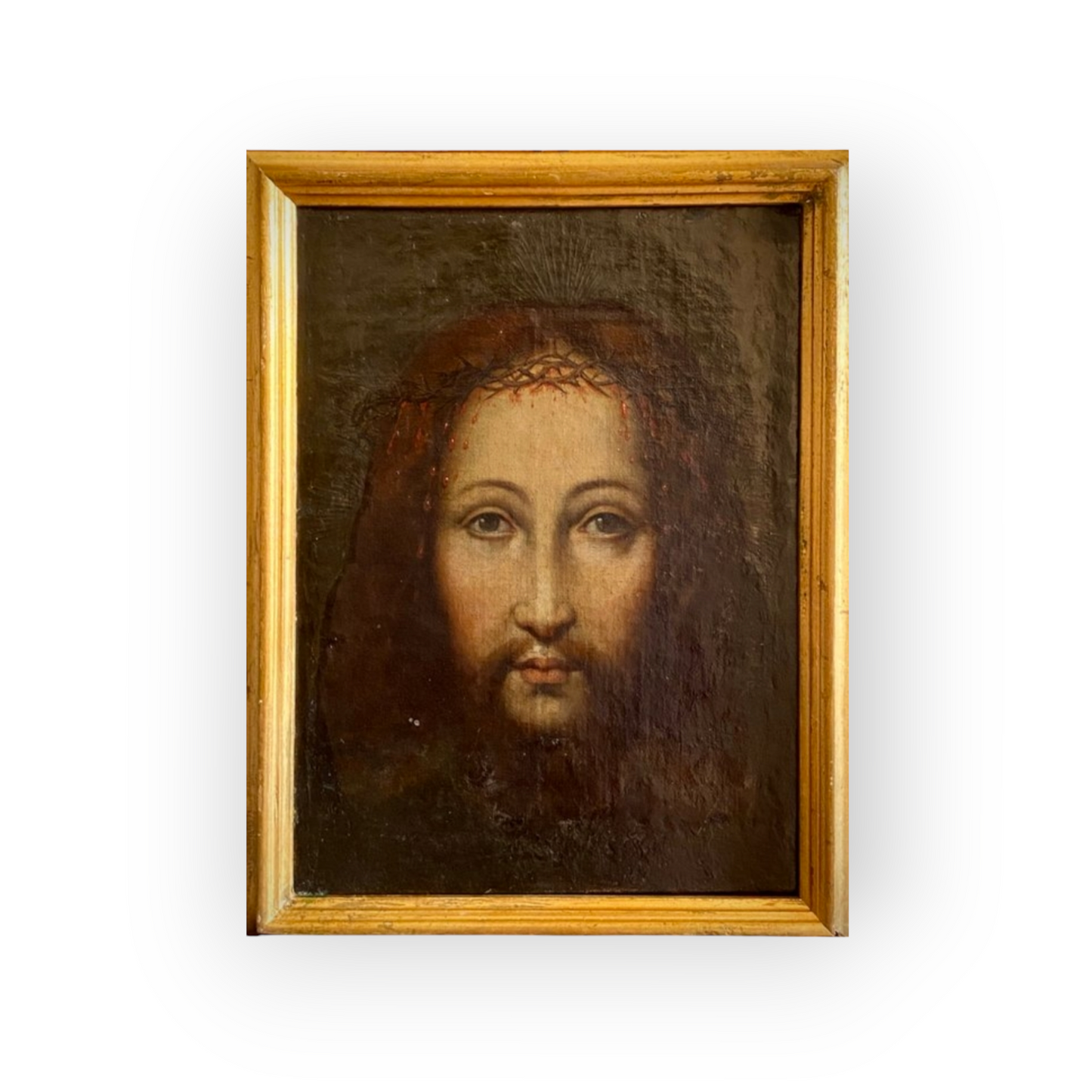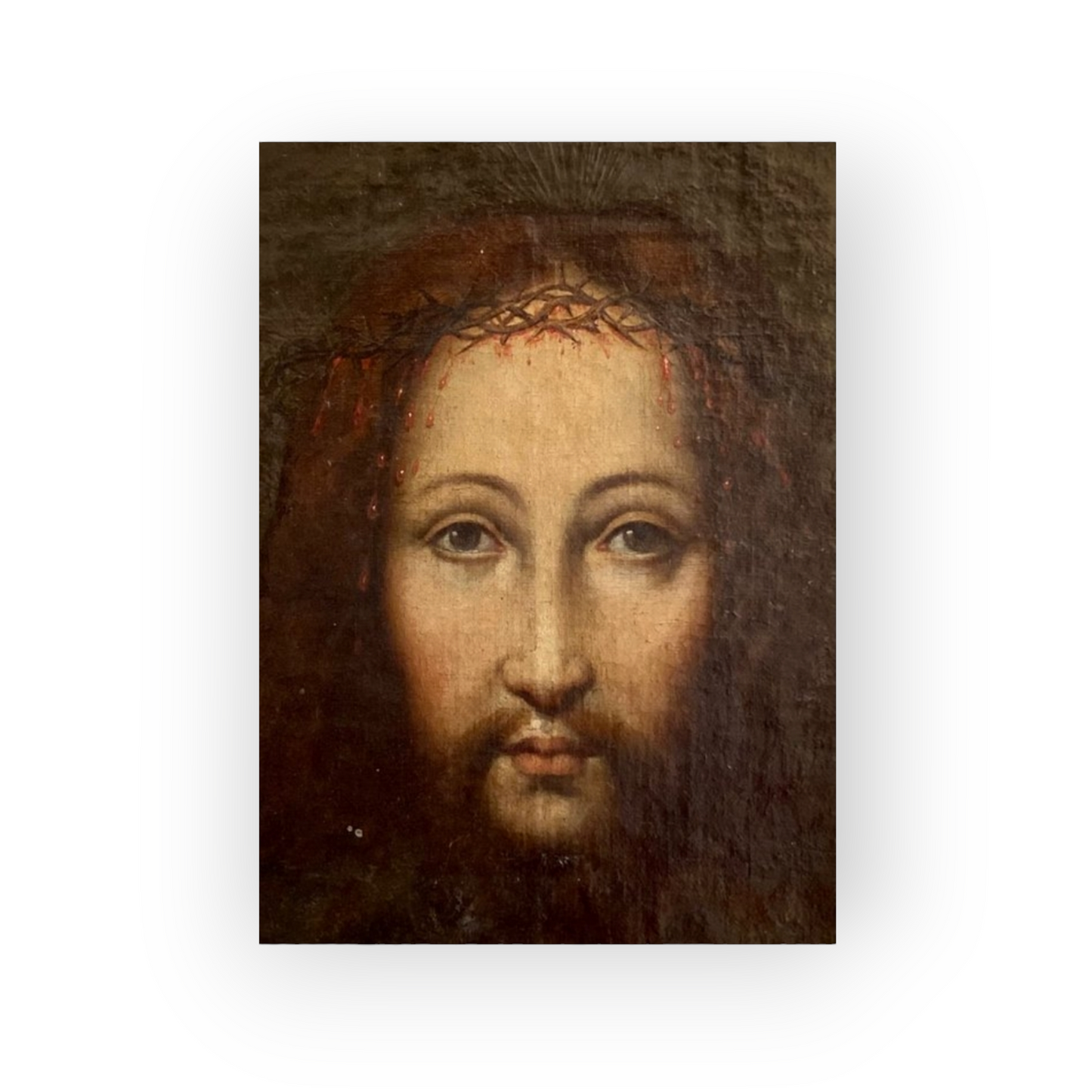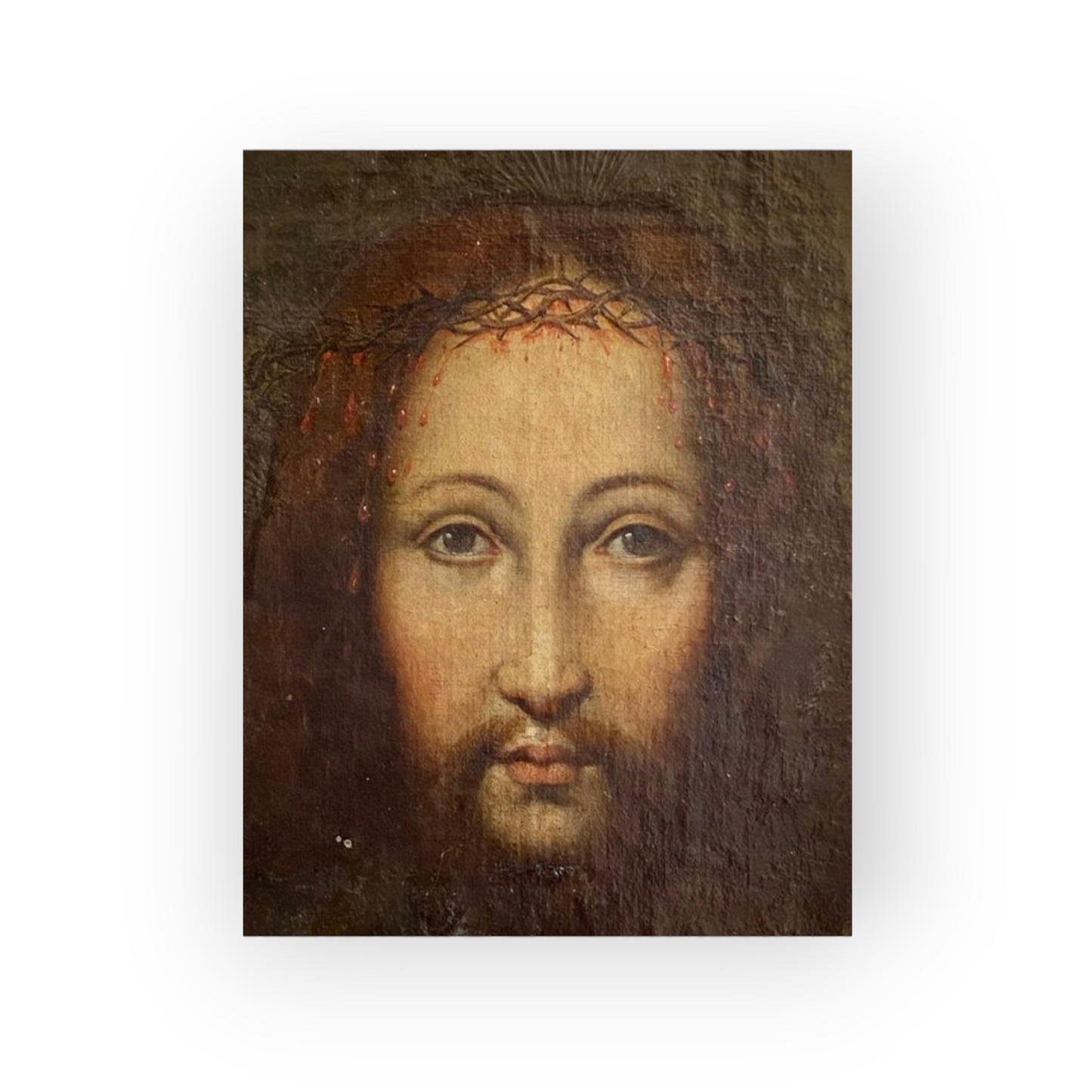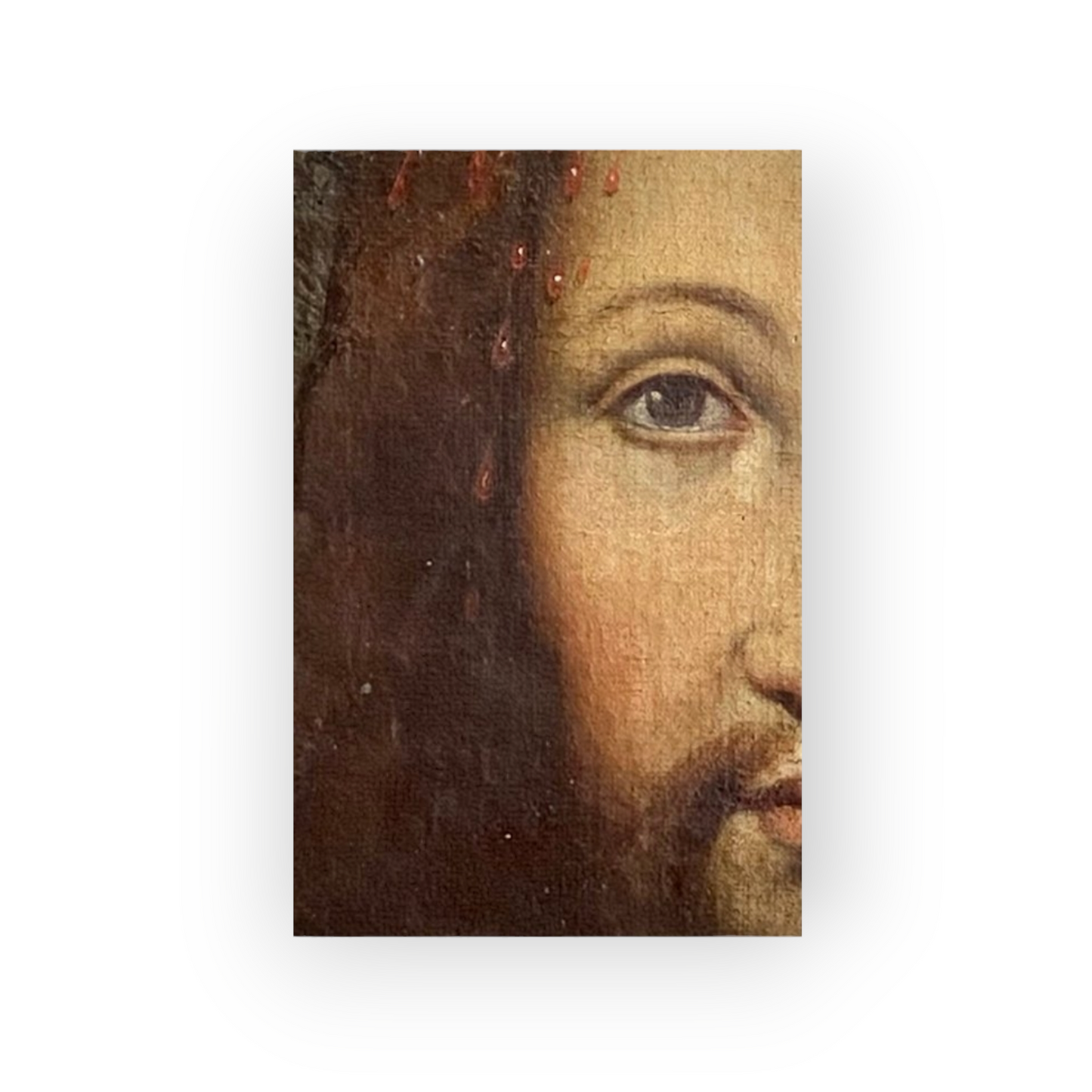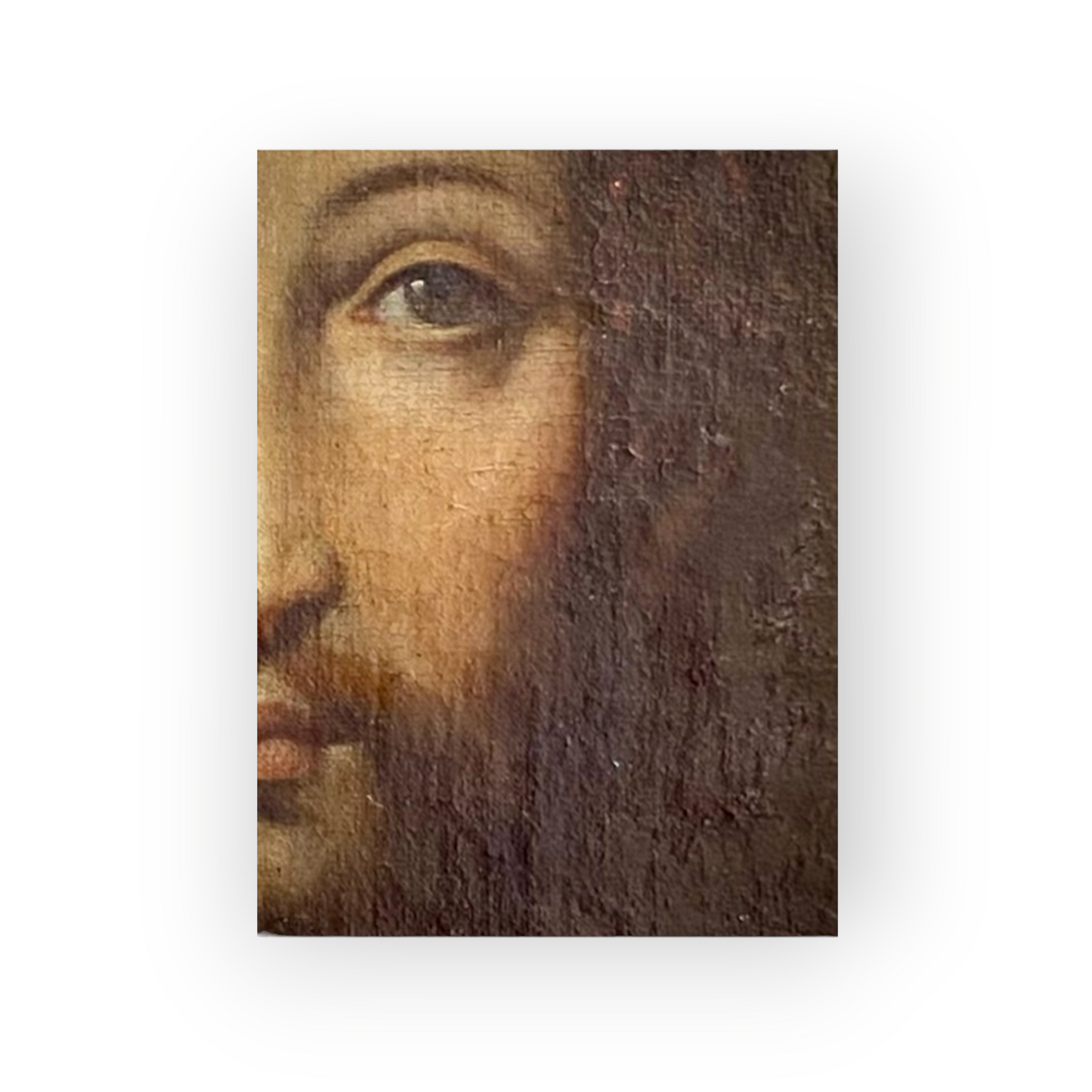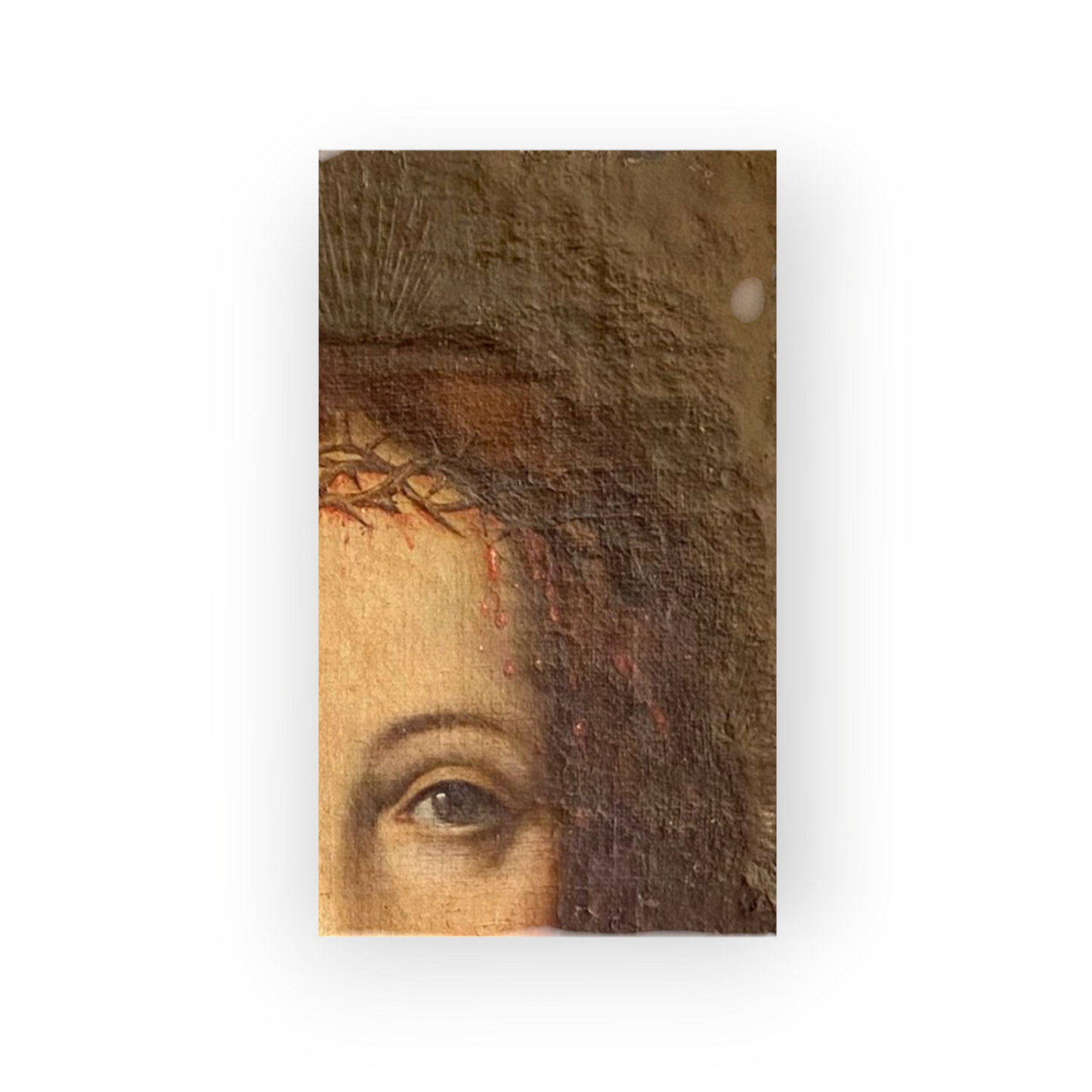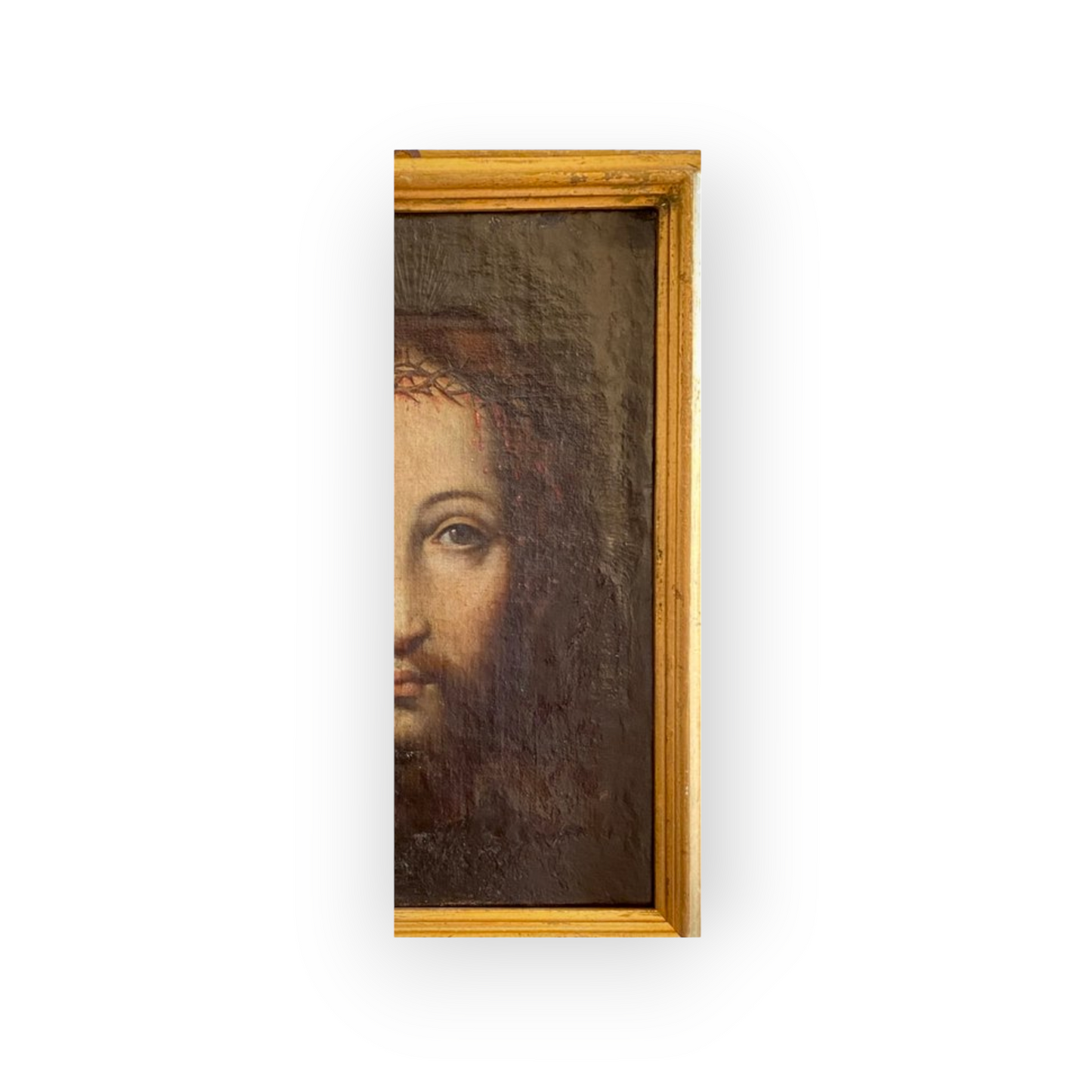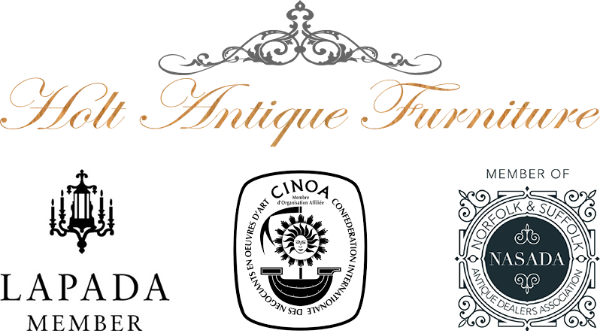Holt Antiques at Walsingham Mill
Ecce Homo (Head of Christ) - Follower of Jan van Eyck (1390 - 1441) - A 17th-Century Flemish School Antique Oil On Canvas Portrait
Ecce Homo (Head of Christ) - Follower of Jan van Eyck (1390 - 1441) - A 17th-Century Flemish School Antique Oil On Canvas Portrait


Couldn't load pickup availability
This intimate image of Christ’s head, intended for private devotion, derives from a lost picture of the Holy Face by Jan van Eyck, now known only through copies, such as this.
About Jan van Eyck:
Like his brothers Hubert and Lambert, Jan van Eyck was a painter and illuminator, but nothing is known of his initial training. The first information relating to his activities dates from 1422 when the artist was in the service of Duke John of Bavaria, Count of Holland. On the Duke’s death in 1425 Van Eyck is documented in the service of the Duke of Burgundy, Philip the Good, as painter and valet. Van Eyck also participated in a series of diplomatic missions that took him to Portugal in 1428 to negotiate the marriage of the Duke to Isabel, daughter of Juan I. While there he painted Isabel’s portrait. The artist spent most of 1426 and 1427 in Lille, where he probably worked on the decoration of his patron’s palace. In 1430 he is documented in Bruges where he married, purchased a house in 1432 and died in 1441. During the months following his arrival Van Eyck must have painted a Crucifixion (now lost), which is known from a copy in a Book of Hours in the Museo Civico d’Arte Antica in Turin and another copy in the Galleria Franchetti, Ca’ d’Oro Venice.
Between 1432 and 1439 Van Eyck executed most of his surviving signed and dated works. His first known, signed painting is his great masterpiece, The Ghent Altarpiece (The Adoration of the Mystic Lamb) of 1432 (St. Bavo, Ghent). Commissioned by Joos Vijdt and his wife, Lysbette Borluut, it has an inscription by the painter in homage to his elder brother Hubert. Both the inscription and Hubert himself (who for many years was considered to have partly painted this work) have been the subject of a wide range of hypotheses and studies. Among Van Eyck’s most important works are The Lucca Virgin (Städelsches Kunstinstitut, Frankfurt), The Virgin of Chancellor Rolin (Musée du Louvre, Paris), and The Virgin of Canon Van der Paele (Groeningemuseum, Bruges). Dating from his last period is The Virgin and Child at the Fountain (Koninklijk Museum voor Schone Kunsten, Antwerp) of 1436, and The Virgin and Child in a Church (Gemäldegalerie, Berlin). Within his oeuvre, Van Eyck’s portraits are equally significant. They include The Arnolfini Marriage of 1434, in which the artist deployed what has been termed “symbolic realism”, and Man in a Turban (both National Gallery, London). In his text on early Flemish painters, Panofsky said of Van Eyck that, “his vision was simultaneously a microscope and a telescope”.
About this painting:
Our painting is Flemish School. 17th-Century in date. Artist - unknown.
Following the original composition, the unknown artist has treated the head like a portrait by surrounding it with a darkened, misty, background. A number of arrows emerge from his head in the background - the symbol of haloed light.
He wears the crown of thorns, and drops of blood run down his forehead. His eyes look directly at you almost conveying strength in his sacrifice.
This depiction does indeed have a very spiritual presence about it.
Presented in an associated gilt-gesso frame of later date.
Provenace - Ex private collection, Italy.
Condition - relined. Please refer to the images. Some minor retouching is evident under UV light. Cleaned historically. A further detailed condition report is available upon request.
Size - Height 43 cm x With 33 cm x Depth 4 cm (17" x 13" x 1 2/3")
🚚✈️🚢 We ship worldwide!
You can buy with 100% confidence too!
We are a member of the following 4 Professional Associations:
1. LAPADA (London and Provincial Antique Dealers Association) – LAPADA is the UK’s largest trade association for professional art & antique dealers (representing approximately 500 UK dealer members). All items are backed by our LAPADA guarantee;
2. CINOA –Confédération Internationale des Négociants en Oeuvres d'Art, (or International Confederation of Art and Antique Dealers' Associations) is the world association of art & antique dealer associations (representing 5000 dealers from 32 associations in 22 countries);
3. The Norfolk & Suffolk Antique Dealers Association - Representing reputable, high quality antiques dealers based in Norfolk and Suffolk; and
4. FSB - Federation of Small Business.
Wish to purchase this item?
1. Buy online via this website; OR
2. Tel: 00 44 7551 383897 (line open 9.30 am to 5.30 pm Monday to Saturday UK time) where we can take payment over the phone.
Want further information about an item or wish to discuss shipping costs?
1. Email us via this website; OR
2. Email us via:
info@holtantiquefurniture.com
We will aim to respond and make contact with you within 24 hours of receipt of your enquiry.
🚚✈️🚢 Shipping & Customs Information
Please Note: Prices shown exclude customs clearance fees. Where applicable, these charges will be levied directly by your receiving courier, designated importer, or local government authority. These fees vary by destination and are the responsibility of the buyer. For guidance on potential charges, we recommend contacting your local customs office prior to purchase.
Share

